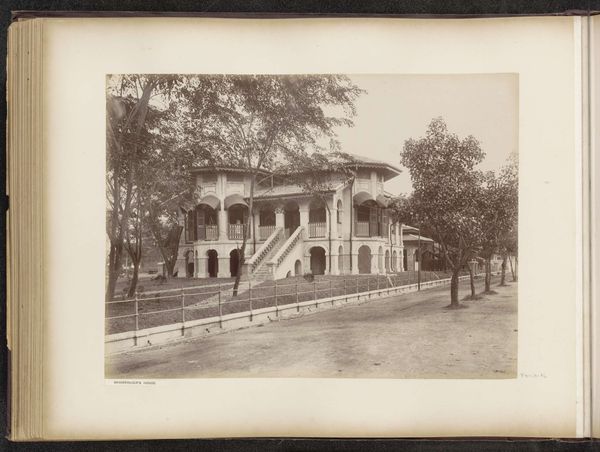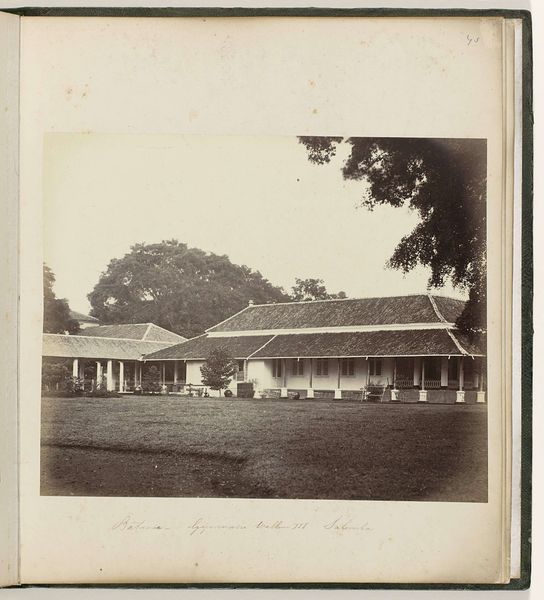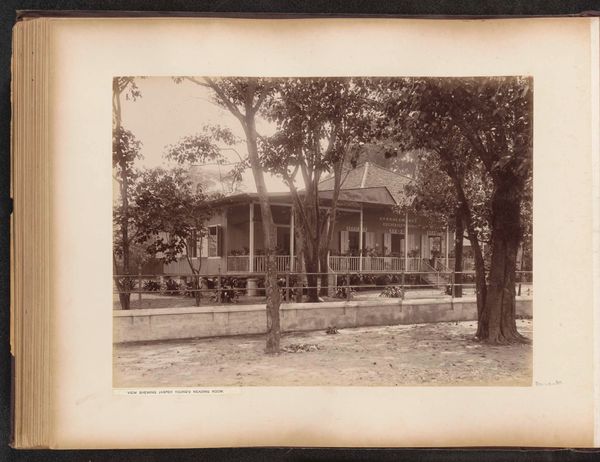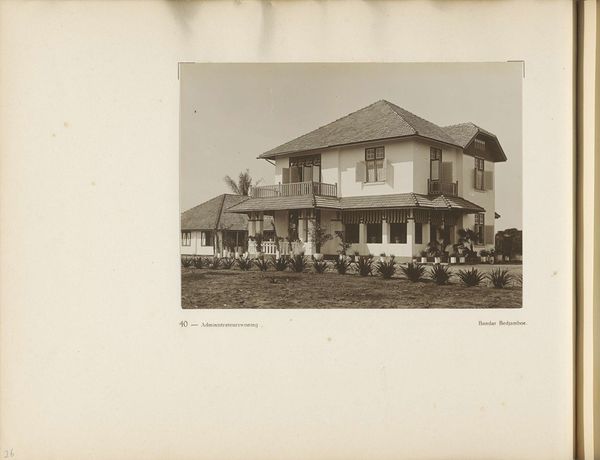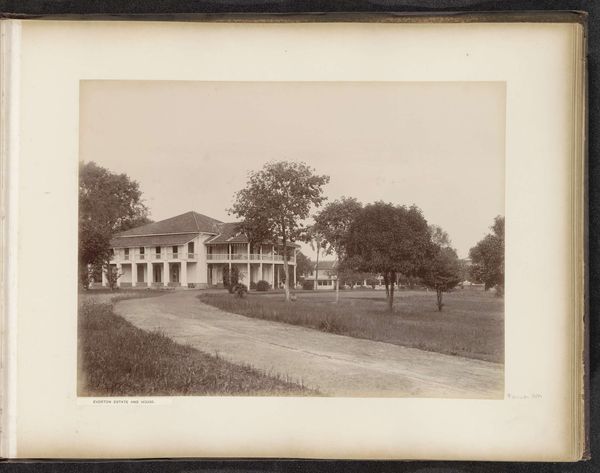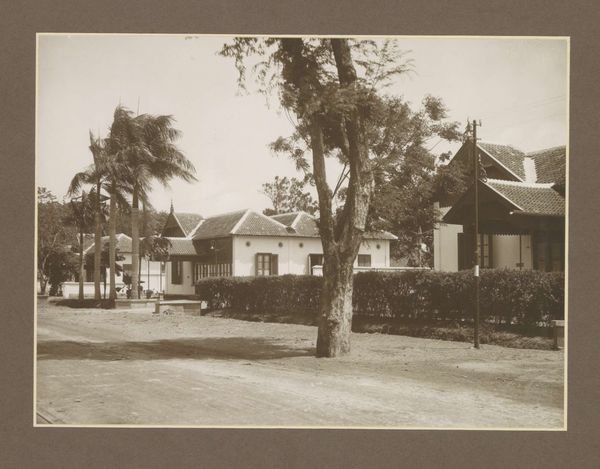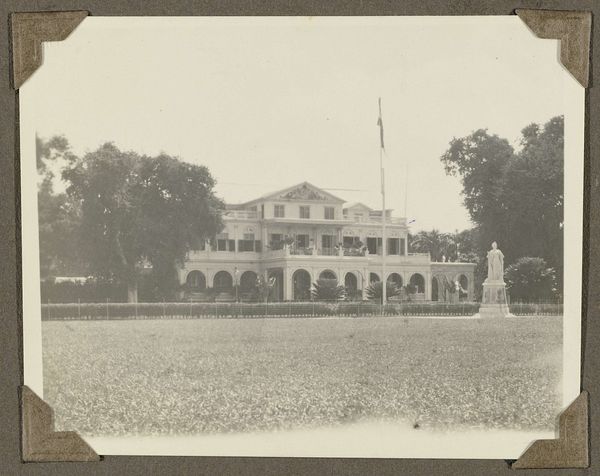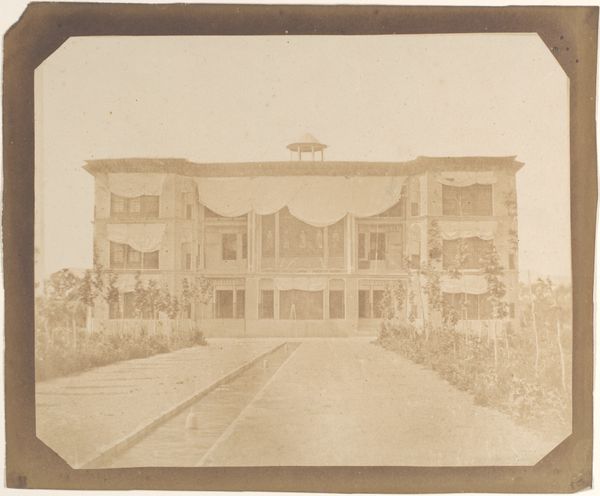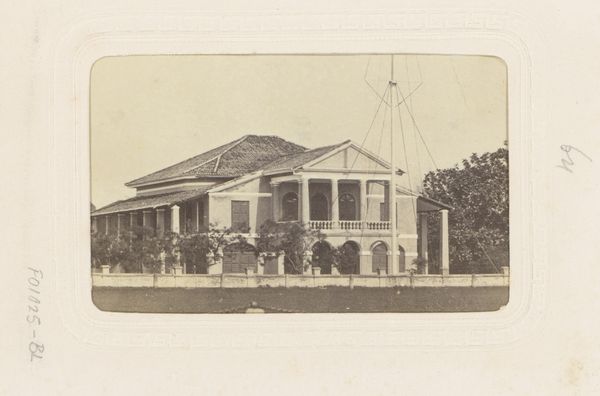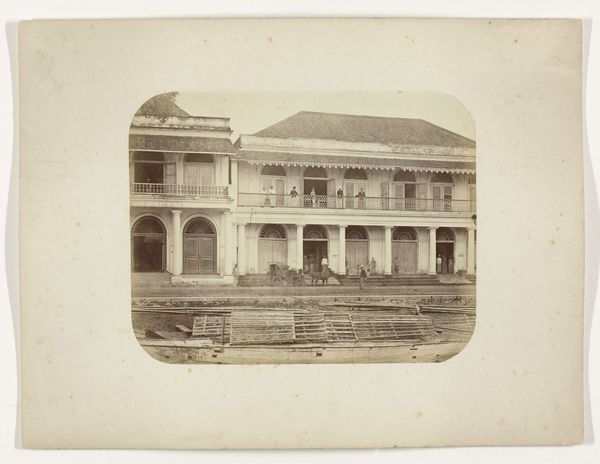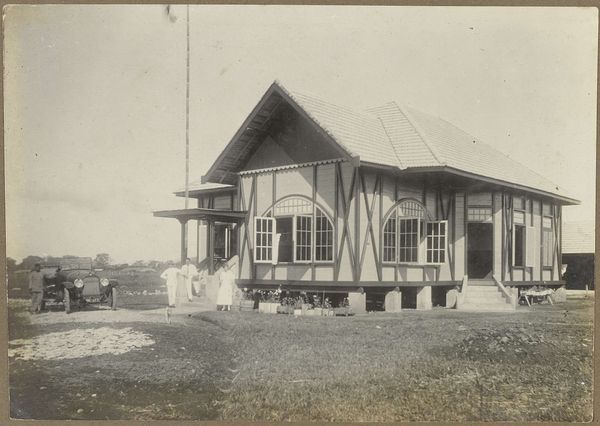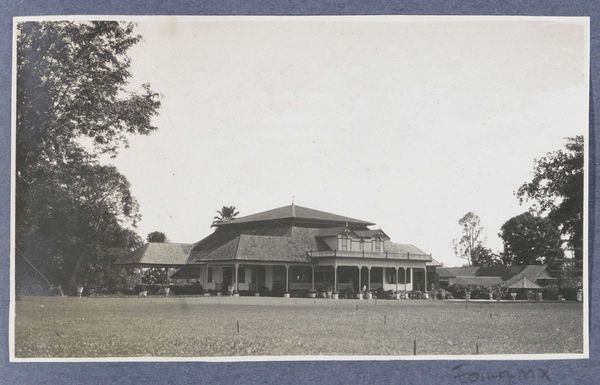
Woonhuis van de directeur van de Tanjong Pagar Dock Co. Ltd. in Singapore before 1905
0:00
0:00
photography
#
landscape
#
photography
#
building
Dimensions: height 266 mm, width 349 mm
Copyright: Rijks Museum: Open Domain
Curator: What a fascinating image we have here from before 1905. This albumen print, taken by G.R. Lambert & Co., showcases the “Woonhuis van de directeur van de Tanjong Pagar Dock Co. Ltd. in Singapore”—that is, the residence of the director of the Tanjong Pagar Dock Company in Singapore. It now resides in the Rijksmuseum. Editor: The composition initially feels very staged. A bit too pristine. The building itself is beautiful, stately even, but there is something sterile in the photograph’s precise angles and almost complete lack of people. Curator: It is incredibly important to remember that photography in this period often carried a specific ideological weight. Images like these, particularly when commissioned, served to project a certain image of colonial power and order. The house is undoubtedly grand, but think about what it represents: the infrastructure that facilitated resource extraction and trade at the expense of local communities. The very cleanliness you noticed served to visually legitimize colonial endeavors. Editor: The house as a symbol is quite interesting when seen from that viewpoint. There is this clear attempt to project authority but look at the architecture! It mixes classical European motifs with, perhaps, adaptations suited to a tropical climate. Does this blend inadvertently point towards the constructed nature of colonial power— a pastiche meant to impress? Curator: Precisely! And notice how the local landscape, while present, seems secondary. The focus remains steadfastly on the building, and what the building, in its turn, signifies in terms of societal stratification. Who could access it? Whose labor built it? Whose wealth sustained it? These are all important entry points into its history. Editor: The flag atop the building then, takes on an extra layer of meaning. Flags are always signifiers, naturally, but here, in conjunction with the architecture, the manicured lawn, and even the stark photographic style, we see a convergence of symbolic power meant to solidify control and create specific impression of superiority. I wonder about the absence of shadow and what that evokes in relation to my perception. Curator: It definitely demands we confront some complex historical realities when looking at what appears to be simply a "house" on the surface. It reveals just how deeply implicated aesthetic representation can be in complex systems of power. Editor: Looking at this photograph through both the lens of colonial ambition and symbol analysis enriches my appreciation. It reminds us that these seemingly simple images encode layered cultural, economic, and historical narratives waiting to be unpacked.
Comments
No comments
Be the first to comment and join the conversation on the ultimate creative platform.

